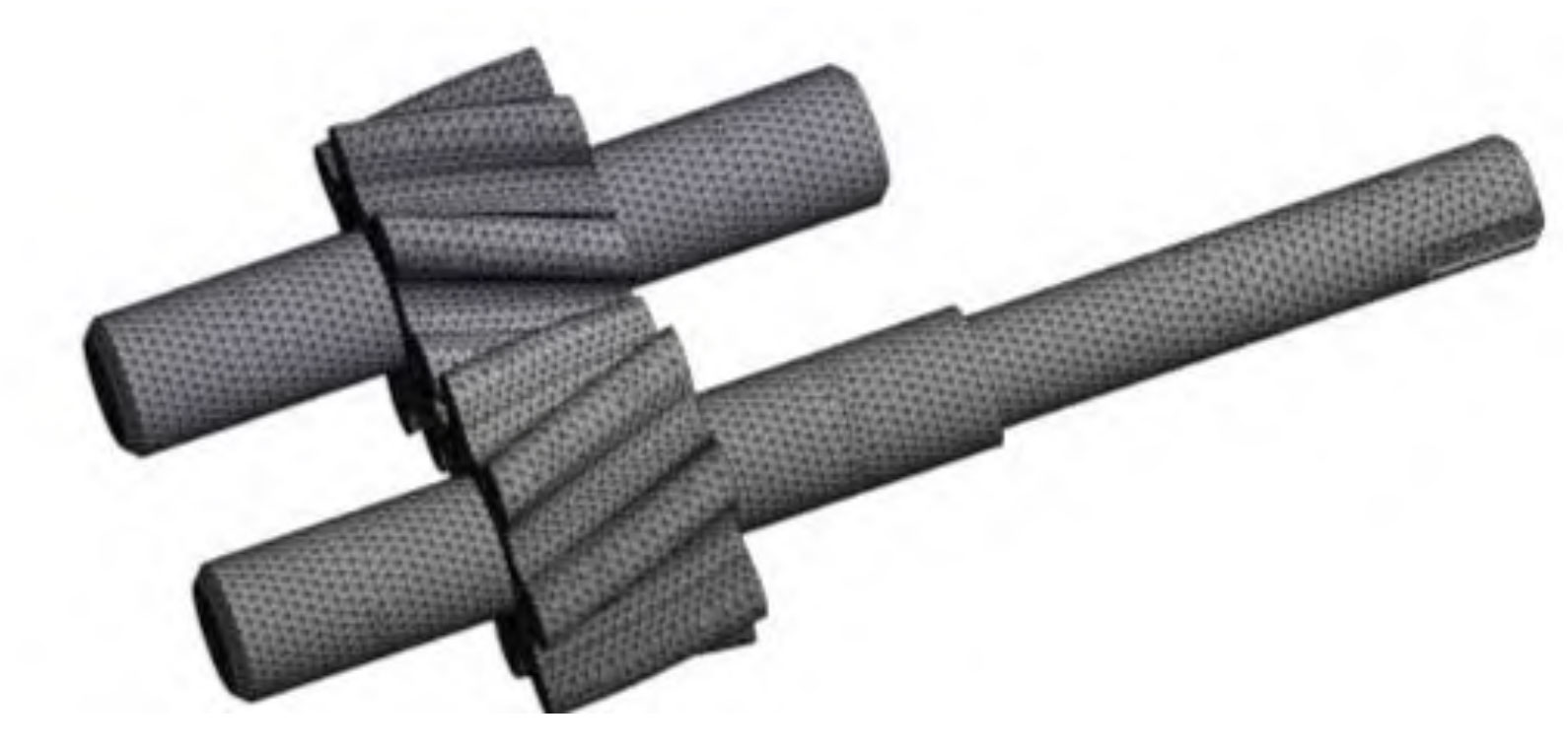The calculation model of double arc helical gear pump rotors is essential for analyzing and optimizing the performance of the pump. This model focuses on the geometry and motion of the helical gears, as well as their interactions with each other and the fluid being pumped. Here are the essential steps to build a calculation model for the rotors of a double arc helical gear pump:

- Gear parameters: Define the necessary gear parameters, including the module, number of teeth, pressure angle, helix angle, tooth width, and center distance. These parameters will be used to generate the double arc helical gear profiles and the overall gear geometry.
- Tooth profile generation: Generate the double arc helical tooth profiles using the gear parameters defined in the previous step. The tooth profile can be generated using mathematical equations or specialized gear design software. The double arc tooth profile consists of two circular arcs with different radii, which provides improved contact conditions compared to traditional involute tooth profiles.
- Gear assembly: Assemble the helical gears in their proper positions, ensuring that the gears are correctly meshed and aligned. The assembly should include the proper clearances between the gear teeth and the pump casing to account for any manufacturing tolerances or thermal expansion.
- Rotor motion: Define the motion of the rotors, including the rotational speed and direction. The motion should be synchronized between the driving and driven gears to ensure proper meshing and fluid transfer within the pump.
- Contact analysis: Perform a contact analysis between the gear teeth to determine the contact points and pressure distribution during operation. This analysis is crucial for understanding the load distribution between the gears and optimizing the gear geometry for reduced wear, noise, and vibration.
- Strength and deformation analysis: Analyze the strength and deformation of the gear teeth under the applied loads from the fluid pressure and contact forces. This analysis can be performed using finite element analysis (FEA) software and can help identify areas of potential weakness or excessive deformation in the gear teeth.
- Efficiency and performance calculations: Calculate the performance of the double arc helical gear pump rotors, including parameters such as flow rate, efficiency, and power requirements. These calculations can be based on the geometry of the rotors, the fluid dynamics within the pump, and the results of the contact and strength analyses.
The calculation model for double arc helical gear pump rotors can be developed using specialized gear design software or general-purpose computer-aided design (CAD) and finite element analysis (FEA) software. The results of this model can provide valuable insights into the performance and efficiency of the pump and can be used to optimize the rotor design for improved performance, reduced wear, and increased longevity.
